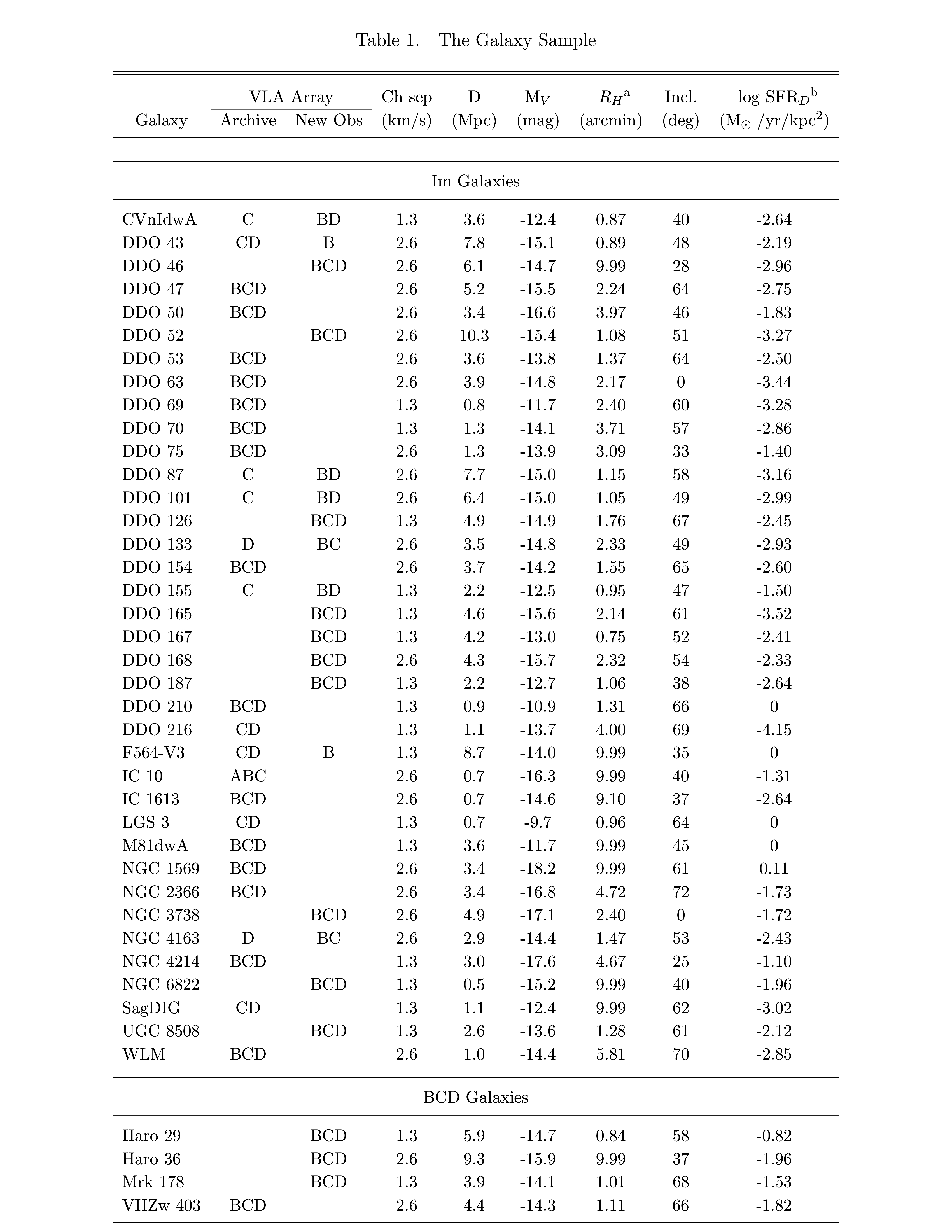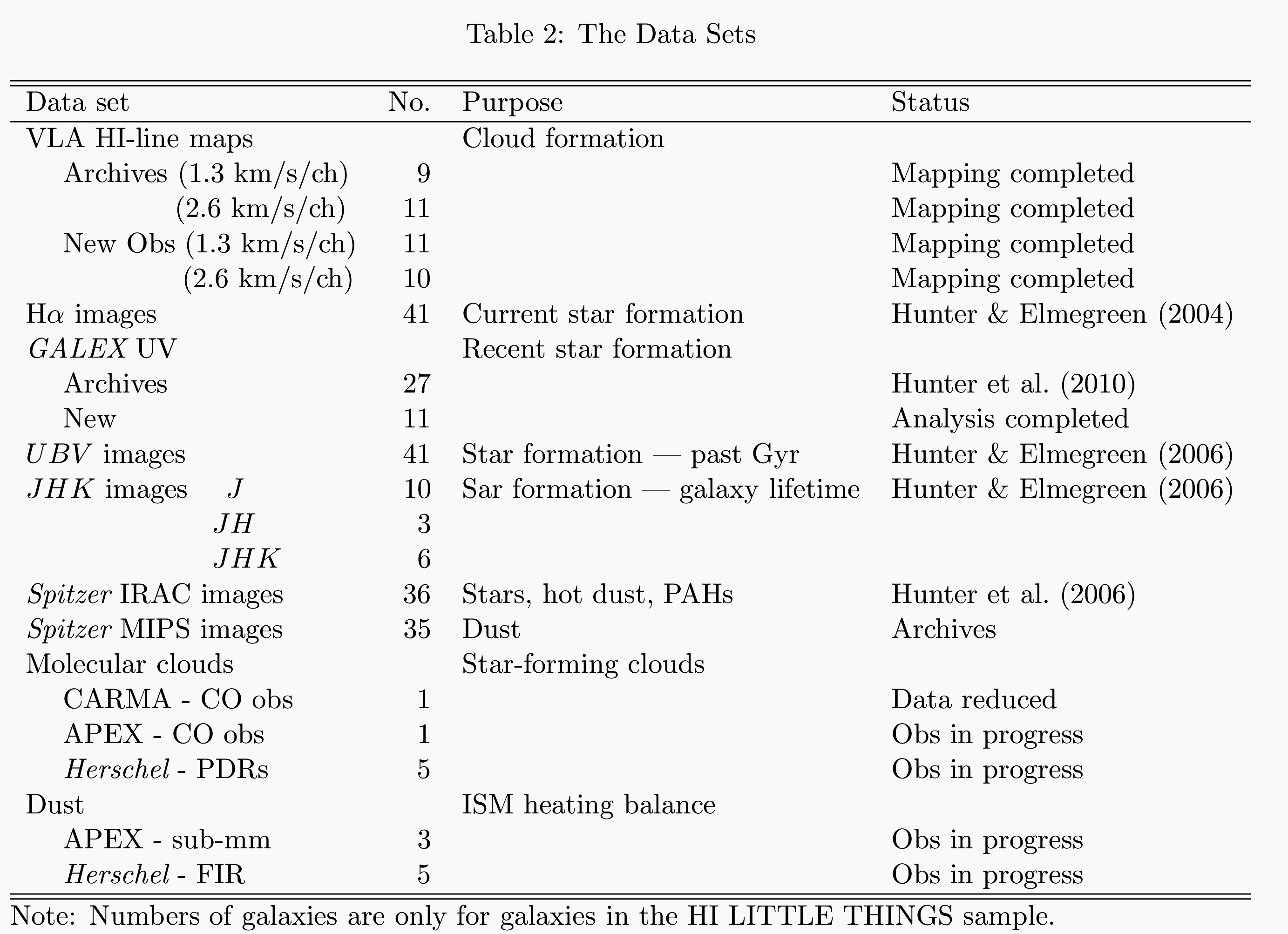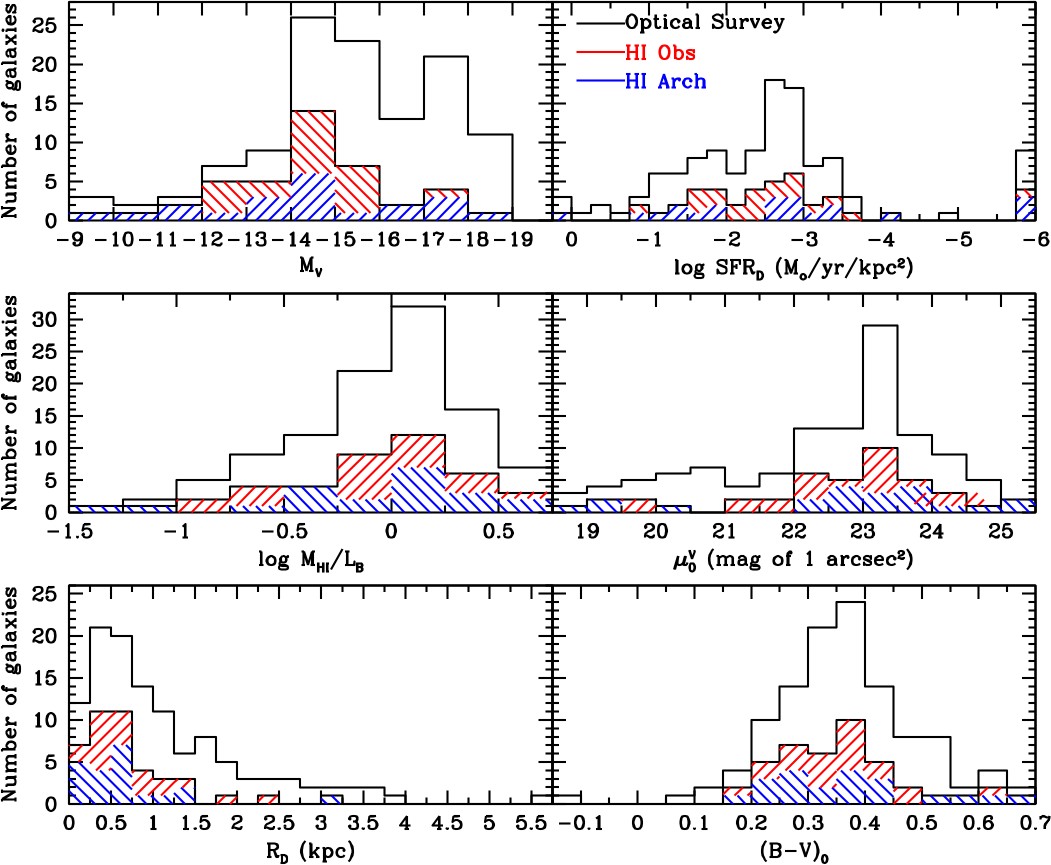
The LITTLE THINGS sample includes 42 dwarf irregular (dIm) and Blue Compact Dwarf (BCD) galaxies. We obtained new VLA HI-line observations of 21 galaxies; the other 21 have data in the NRAO archives. (However, NGC 1156 was dropped from our sample because the archival observations did not have any line-free channels for determining continuum. Also, we obtained data on NGC 6822, but there is a zero-spacing issue and no maps are available with these data.)
Here is a collection of all 40 of the LITTLE THINGS galaxies to the same relative scale. Red=HI, green=V, and blue=FUV.
The galaxies are listed in Table 1 and the datasets in Table 2.
The LITTLE THINGS sample was drawn from a larger multi-wavelength
survey that includes
94 dIm, 24 BCDs, and 18 Sm galaxies
(Hunter & Elmegreen 2004,
2006),
the result of 15 years of observations.
The HI sample covers a large range of dIm parameter space of the full survey
(see Figure 1), including
the extremes---from high star formation rate BCDs to low
surface brightness dwarfs without any current star formation.
Distances have been updated from those used by Hunter & Elmegreen (2004, 2006), and references for
the new distances used here are given by
Hunter et al 2012.

aRH is the Holmberg radius, the radius of the galaxy at a B-band isophote, corrected for reddening, of 26.7 mag of one arcsec2.
bSFRD is the star formation rate, measured from
Halpha, normalized to the pi×RD2,
where RD is the disk
scale length measured from V-band images.
A galaxy without any detectable Halpha emission is listed as
having a SFR of 0.

References for published datasets:
Halpha images (Hunter & Elmegreen 2004);
UBVJHK images (Hunter & Elmegreen 2006);
Spitzer IRAC images (Hunter, Elmegreen, & Martin 2006);
Spitzer IRS spectra (Hunter & Kaufman 2006, AJ, submitted);
individual HI studies (Hunter, Elmegreen, & van Woerden 2001;
Simpson, Hunter, & Knezek 2005;
Simpson, Hunter, & Nordgren 2005;
Kepley, Wilcots, Hunter, & Nordgren 2007).

Figure 1: Properties of the LITTLE THINGS HI sample
(new observations [hashed +45° ]+archive
[hashed -45°])
compared to the entire optical survey (open) of
Hunter & Elmegreen (2004,
2006).
The HI sample covers the range of parameters of the full survey.
dIm and BCD galaxies have been combined. A star formation rate (SFR) of 0 is
plotted as a log of -6. SFRD is the SFR
normalized to pi×RD2, where
RD is the disk scale length.